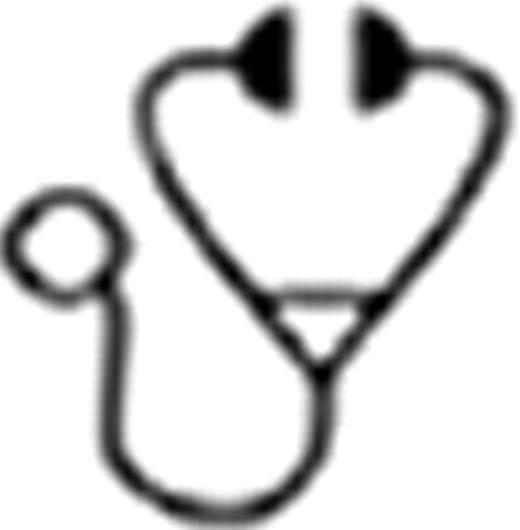Abstract
ASXL1 mutations have recently been described in a number of different myeloid malignancies. Data on frequency, association with other markers and outcome in AML are rare. Aim: The aim of this study was to evaluate ASXL1 mutations (ASXL1mut) in AML with intermediate risk karyotype for frequency, association with other mutations and impact on outcome. Methods: We analyzed 476 cases with intermediate risk de novo AML for ASXL1 mutations by direct Sanger sequencing of exon 12. Other mutations were analyzed as described previously and were available in part of the patients (NPM1: n=474, FLT3-ITD: n=473, FLT3-TKD: n=407, MLL-PTD: n=474, CEBPA: n=447, RUNX1: n=150, WT1: n=384, IDH1: n=464 and IDH2: n=444, TET2: n=109, NRAS: n=191; KRAS: n=110, DNMT3A: n=83). 397 cases had a normal karyotype (NK) and 79 had intermediate risk aberrant cytogenetics (according to MRC). Female/male ratio was 221/255 and age ranged from 18.5–100.4 y (median: 66.4). Results: Overall, in 70/476 patients (14.7%) ASXL1mut were detected. In detail, the most frequent mutation was p.G646WfsX12 (n=36) followed by p.E635RfsX15 (n=9), and p.Y591X (n=2). The remaining 21 mutations were non-recurrent consisting of 2 frameshift, 13 nonsense and 6 missense mutations. All mutations were detected with a mutation/wildtype load of 40–50% and none of the cases had more than one ASXL1mut. ASXL1mut were more frequent in males than in females (56/255, 22.0% vs 14/221, 6.3%, p=0.001) and were associated with higher median age (72.4 yrs vs 64.1 yrs, p<0.001). In detail, in the cohort > 65 yrs 21.7% (n=55/254) and in those <65 yrs only 6.8% (n=15/222) were ASXL1mut (p<0.001). With respect to morphology ASXL1mut were more frequent in AML without maturation than in all others (37.5% vs 14.3%, p=0.022). In 242 cases immunophenotyping data was available and cases with ASXL1mut (n=34) had a higher expression of CD13 (mean±SD, 55±23% vs. 43±25%, p=0.012), CD34 (46±32% vs. 24±26%, p<0.001), CD133 (29±27% vs. 16±23%, p=0.006) and HLA-DR (42±25% vs. 30±24%, p=0.009) as well as a lower expression of CD33 (66±21% vs. 77±21%, p=0.005) and thus had a more immature immunophenotype as compared to ASXL1wt. There was no association with leukocyte or platelet counts. With regard to cytogenetics ASXL1mut were more frequent in those with aberrant karyotype than in NK (20/79, 25.3% vs 50/397, 12.6%, p=0.008). Generally, ASXL1mut were observed together with all other molecular mutations but there was a strong correlation to RUNX1mut (n=18/43, 41.9% vs 19/107, 17.8% in RUNX1wt, p=0.003) and a negative correlation with NPM1mut (n=9/274; 3.3% vs. n=61/200, 30.5% in NPM1wt, p<0.001) and DNMT3Amut (1/26, 3.8% vs. 19/55 in DNMT3A, 34.5%, p=0.002). Patients with ASXL1mut had a shorter overall survival (OS) (median: 11.2 vs 38.8 months, p<0.001) and event free survival (EFS) (median: 9.0 vs 23.9 months, p<0.001). In detail, this adverse impact could be shown for both NK (OS: median: 10.9 vs 38.3 months, p<0.001; EFS: 9.8 vs. 26.5 months, p<0.001) and intermediate risk aberrant cytogenetics (OS: median: 8.6 vs 38.8 months, p<0.001; EFS: 5.3 vs 21.5 months, p=0.011), separately. Although the ASXL1mut were much more frequent in the elderly and compared to the ASXL1wt had a shorter OS (median: 7.0 vs 16.3 months, p=0.002) an adverse effect on survival could also be shown in the cohort <65 yrs (median OS: 11.6 vs 47.3 months, p<0.001 and median EFS: 9.3 vs 34.5 months, p<0.001). Because of the high coincidence of the two mutations the impact of ASXL1mut in dependence of RUNX1 status was analyzed. In the RUNX1mut (n=43) the ASXL1mut (n=18) still had an adverse impact on EFS (median: 5.3 vs 15.6 months, p=0.010) and a trend for shorter OS (10.7 vs. 20.5 months, p=0.079). In a multivariable analysis ASXL1 is an unfavourable factor for OS independent of age and RUNX1 mutational status (p=0.026, RR: 2.0). Conclusions:ASXL1 mutations belong to the most frequent mutations in intermediate risk AML. There is a strong association with male sex, high age, immature phenotype and RUNX1mut. Still, ASXL1mut retained its independent very poor prognostic impact. Although the number of known molecular markers in AML is continuously increasing and selection of the most import markers for diagnostic work-up seems challenging this data indicates that ASXL1 is one of the most prominent candidates.
Schnittger:MLL Munich Leukemia Laboratory: Employment, Equity Ownership. Eder:MLL Munich Leukemia Laboratory: Employment. Alpermann:MLL Munich Leukemia Laboratory: Employment. Fasan:MLL Munich Leukemia Laboratory: Employment. Grossmann:MLL Munich Leukemia Laboratory: Employment. Kohlmann:MLL Munich Leukemia Laboratory: Employment. Kern:MLL Munich Leukemia Laboratory: Employment, Equity Ownership. Haferlach:MLL Munich Leukemia Laboratory: Employment, Equity Ownership. Haferlach:MLL Munich Leukemia Laboratory: Employment, Equity Ownership.

This icon denotes a clinically relevant abstract
Author notes
Asterisk with author names denotes non-ASH members.

This feature is available to Subscribers Only
Sign In or Create an Account Close Modal